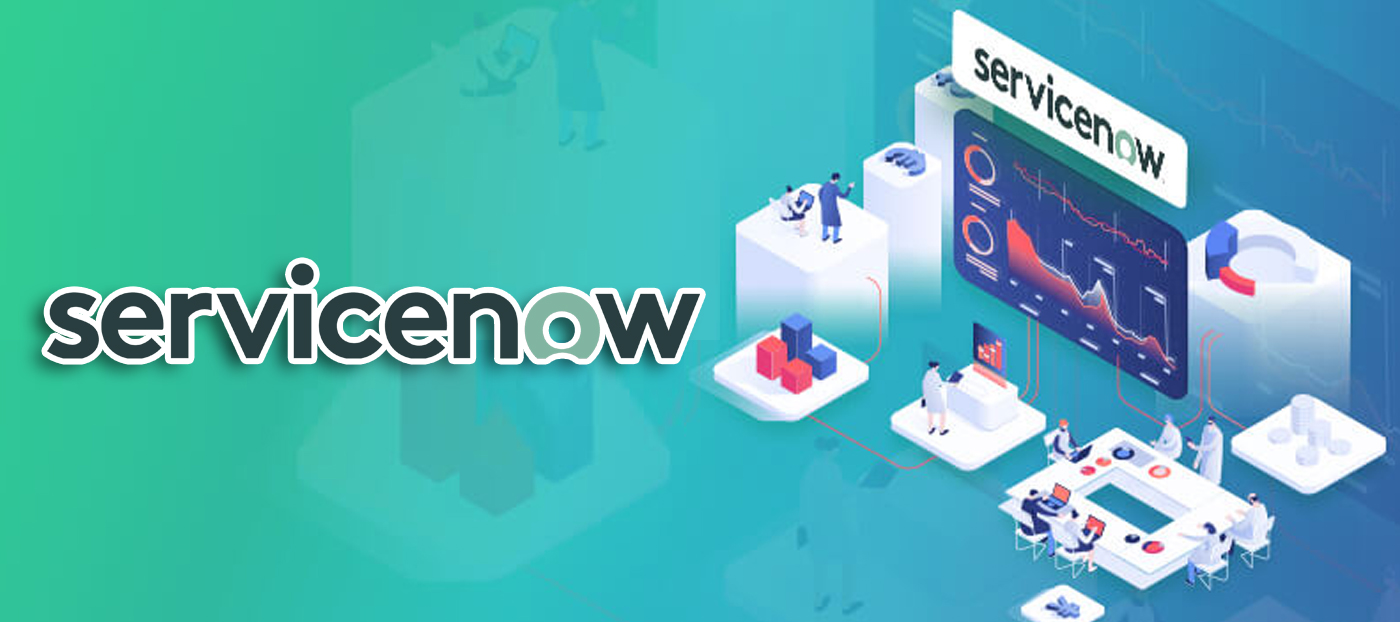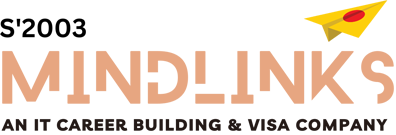
As the entire Globe is moving around the word “Cloud”, now it has become mandatory for every technology or tool to convert its dynamics, structure, architecture, and everything into CLOUD. The technology or a tool that you adopted should be new to the market, to get a job or to switch to another job, and the training feasibility of it should be very low in the market. It makes you demandable & dependable for an organization and will be a no-other-go for a company until they make you join in. It will be possible when that technology or tool is of CLOUD. Any CLOUD-based technology or tool is not installable software, and it can run by accessing its software instance [SaaS+PaaS] through the internet in your browser. It can be possible only for MiNdLiNkS to provide you training & practice with a software instance by an ITSM expert from every ground of the ITIL process and its practices.
The Cloud market has been growing very aggressively and seeing similar growth rates for each business organization, as well.
You can avail Online training with assured job assistance and references for Service-now training seekers only from MiNdLiNkS.
What is ServiceNow? – Issues, Service Requests, and Change Requests which are common in every project, in any phase, from every part of the project external stakeholders, will be administered, tracked, catered to, escalated, diagnosed, analyzed, identified, tasked, resolved, self-customized and communicated by ServiceNow, the only cloud Tool from IT Service Management (ITSM) Competence. Service-now offers a portfolio of robust cloud-based products that automate and manage IT service relationships across the enterprise, having the advantage of being built on a single cloud platform that consists of one user interface, one API, and one data model, delivering easy, automated upgrades. Service-now provides an intuitive and approachable user experience complete with expert services to accelerate time-to-value.
Who should attend ServiceNow training? –
- Entry-level Software professionals (From any background)
- ITSM, Incident Management, Problem Management, Asset Management, Change Management, etc
- professionals MBA, BBA, MCA, M.Sc, B.Tech, B.E Fresher / Experienced people
- Non-IT professionals aspiring to get into IT industry.
- Domain-experienced professionals [Banking, Insurance, Finance, Capital market, Pharma, Telecom, Energy & Utilities, Marketing, Retail, Consumer durables, Manufacturing, Aerospace, etc.,]
- Remedy, HP service manager, IBM Maximo, etc ITSM Tool professionals
- Developers / Programmers / Middleware tool consultants
- Test engineers / Test leads / Reporting Analysts from any technology
- SAP/Siebel/PeopleSoft/PEGA/Sales Force etc., [ERP/CRM/BPM] Business consultants
Who is my ServiceNow Trainer? – Sri, MiNdLiNkS endorsed Training Professional; ITIL & Service-now Certified, Senior Lead Service-now Implementation Specialist, JPMC, by the role, having 15+ years of experience.
What is ServiceNow Training plan? – [training-grooming-supporting]
- 45 Days of Live work sessions including Training on concepts Assignments
- Practice Live Case Studies
- Real-time Working Scenarios
- Expertise in Software Tool
- Software Instances access
- End-to-end Resume building & Presentation
- Genuine FAQs & Generalized worked-out answers
- Informative material documents
- Tech support
- 100% Pass Assured Certification Assistance
- Mock Interviews and Consultation (INTERNAL REFERENCES in renowned CMM level companies) with 100% Placement Assistance •100% Placement Assured Proxy assistance in Interviews & On-Job-Support from MiNdLiNkS.
What is ServiceNow Training Methodology? – Service-now Implementation and Administration and Consulting: This course gives candidates a combination of instructor-led lectures and hands-on experience implementing ServiceNow cloud-based ITSM platform. ServiceNow training course covers the underlying architecture, technical components, implementation planning considerations, and implementation tasks essential for a ServiceNow ITSM implementation project. Along with
implementation tasks and details, this course provides a detailed overview of ServiceNow mandatory dependencies, enabling candidates to understand the entire scope of a ServiceNow ITSM implementation project. Through lectures, demonstrations, hands-on exercises, team activities, and classroom discussions, candidates gain an understanding of the scope of a ServiceNow ITSM implementation project, including implementation tasks, ITIL/ ITSM processes, configuring the UI and out-of-box applications, setting up Self-Service, managing Service Catalog, managing Tickets (Request, Incidents, Change, and Problem) along with Knowledge Base, setting up and maintaining users, adding CIs (Configuration Items) to the CMDB, customizing messages and prompts, using workflow, reports, BSM (Business Service Map) and email notifications, integrating with legacy systems, LDAP and external web-services, and running Mid server (Discovery.)
Course Objectives:
- Covers multiple modules ITSM, ITOM, Flow Designer, Service Portal, Integration Hub, and Various Integrations.
- Depth knowledge will be in variety of Integrations with ServiceNow.
- Wide discussion and practices towards ServiceNow customizations using scripting.
- Each module will have its own Practical Practice Sessions.
- Understand core ServiceNow Applications and Modules.
- Understand the High-Level Process involved in implementing ServiceNow ITSM platform (Post-Mandatory-Dependency-Implementation).
- ITIL and ITSM exposure will be given throughout the Program.
ITSM – ITOM – Flow Designer – Service Portal – Integration Hub – Integrations in a SINGLE PROGRAM
- Introduction to ServiceNow
- Introduction to ServiceNow Instances & Process
- SNC Navigations
- SNC Applications and Modules
- Forms, Lists and Tables
- Basic Forms and List Modifications and Administration
- Personalizing Forms
- Creating New Sections in forms
- Personalizing Lists and List controls
- Introduction to Different types of Fields
- Dependent Choice Field Creation
- Configuring Users and Groups and Administration
- Users
- Groups
- Roles
- Roles tagging to Users and Groups
- Tables and Columns Administration
- Introduction, Schema Map, Creating Tables Adding Fields etc.
- Auditing Tables and Fields
- Recovering Deleted Data
- Applications and Modules Administration
- Creating and Modifying Applications and Modules and other related activities
- Limiting Access of Applications and Modules to specific set of Roles
- Introduction on Different Modules
- Incident Management
- Problem Management
- Change Management and it’s Workflows
- Service Level Management
- Change Management
- Different types of Change Requests and their Significance
- Change Types and Respective Workflows
- Risk Assessment Plug-in Activation
- Risk Questionnaires Configuration and defining Thresholds and Conditions
- Service Level Management
- SLA Definitions and Triggering Conditions
- SLA Schedules
- Retroactive start usage in SLA
- SLA Workflow and Notifications on breach
- Service Catalog
- Introduction to Items and Categories
- Introduction to Variables and Variable Sets.
- Creating Workflows
- Associating workflows to Items
- Email Notifications and Events
- Email Notification Creation (When to trigger, Whom to trigger, What content to send)
- Templates Utilization in Email Notification
- Events Creation
- Email Notification through Events
- Email Notification in workflow via Notifications and Events
- Send to Event Creator usage
- Debugging mail sending Issues
- Import Sets and Transform Maps
- Data load through Excel
- Transform Mapping (Auto and Manual Mapping)
- Scheduled Imports
- CMDB and Discovery
- CMDB purpose in Incident & Problem & Change Request
- Data Load using Import Sets into CMDB
- Scripting
- Client Side Scripting
- Client Scripts (Intro, How to write and use)
- UI Policy (Intro, How to write and use)
- UI Scripts
- UI Page
- UI Macros
- Server Side Scripting
- UI Actions (Intro, How to Write and Use)
- Business Rules and Global Business Rules (Intro, How to Write and Use)
- Script Include
- Background Scripts
- Update Sets
- Introduction to Update Sets
- Creating an Update Sets
- Using an Update Sets
- Creating Update Source
- Retrieving Update Sets
- Moving Changes between Instances
- Advantages and Best Practices
- Reports, Gauges and Homepage
- Creating Quick Reports from Lists
- Creating Reports, Gauges and Homepages
- Various types of Reports and Usage
- Scheduling Reports
- ITSM Lab Practices – 1
- ITSM Lab Practices – 2
- ITSM Lab Practices – 3
- ITSM Lab Practices – 4
- ITSM Lab Practices – 5
- Add Flow Designer topics
- Flow Triggers
- Flow Actions
- Sub Flows
- Flow Logics
- Flow Designer Lab Practices – 1
- Flow Designer Lab Practices – 2
- Service Portal
- Widget
- Page
- New Portal
- Service Portal Lab Practices – 1
- Service Portal Lab Practices – 2
- Integration Hub
- Integration Hub Lab Practices – 1
- Integrations
- Discovery Integration
- MID Server Integration
- Rest API Integration
- Integrations Lab Practices – 1
- Integrations Lab Practices – 2
- Integrations Lab Practices – 3
- ITOM Overview
- MID Server Installation
- Discovery Patterns
- Service Mapping
- Event Management
- Cloud management
- ITOM Lab Practices – 1
- ITOM Lab Practices – 2
- ITOM Lab Practices – 3
- Interview Show Time – 1
- Interview Show Time – 2
- MiNdLiNkS Exclusive Online Tests & Scorecards
- Internship Certification from MiNdLiNkS
Social Profile
Office Photos
Profile Info
-
Phone+919951081013
-
Email
